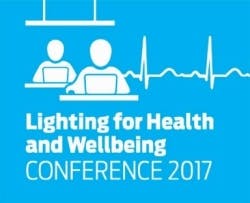While I enjoy my leisure reading, I often wander off to online resources that provide additional perspective or context to historical fiction, contemporary fiction, the odd biography and nonfiction opus. So of course I looked up HD, and proceeded to dig around various online resources about treatments in order to better understand the characters affected by this debilitating neuromuscular disease. The point is when you start poking around the ole WWW, you find a lot of other interesting little gems, such as whether cannabinoids aid in the treatment of HD, found on this site run by scientists and delivered in digestible form for the layperson. While the upshot of the current reviewed research and anecdotal information was that there is no vetted corroboration that medical marijuana and derivatives can improve the symptoms of HD by working on the necessary neurotransmitters, the article’s author points out that a lot of excellent and inspiring scientific inquiry is still happening. Just because something hasn’t been proven out yet does not mean it will not produce effective and safe results someday. Sometimes that hinges on finding the right formulation or developing the right experiments to turn possibilities into problem solvers.
Learn more about human-centric lighting and how light promotes health and productivity at the 2017 Lighting for Health and Wellbeing conference July 27 in Newport Beach, CA:lightingforhealthandwellbeing.com
And that’s where I started to ponder again the topic of lighting that is said to benefit health, productivity, and general wellbeing (see an earlier blog). We’ve been watching, covering, and learning from those advancing this field for several years now. One of the earlier cautions about human-centric lighting (HCL), or lighting for health and wellbeing, has been to determine the potential negative effects of lighting, especially blue-rich light, on human biology. In fact, one of our upcoming Lighting for Health and Wellbeing speakers, Deborah Burnett, wrote on this very topic back in 2015. Her intention was not, in my view, to be a naysayer to the appropriate application of solid-state lighting (SSL) — but rather to rally lighting designers, product developers, and specifiers to gain more academic-backed knowledge and to encourage collaboration between the health and SSL R&D communities before making unfounded claims and unintentionally causing more harm than good. At that time, we had some relative controversy over the conservative approach that was touted.
We certainly still agree that understanding the science behind circadian rhythms and the human visual and non-visual responses to light is critical to designing LED lighting that truly delivers on the wellbeing promise. That’s where this conference ties in to my ruminations on science and medical investigation, and the eternal optimism of innovators that they can find a way to resolve concerns and deliver solutions that will improve the human condition. The conference presenters will surely provide a 360-degree view of the current state of HCL — backed by scientific study and measurable results. You can see from the program that this conference is heavily steeped in science; there are members of the medical community, those involved in LED R&D, and those who are already working with commercialized products in the lighting design and specifier community scheduled to present their expertise and findings. The closing panel in particular promises to be eye-opening and exciting: Keynoter Dr. Shadab Rahman, lighting consultant Jim Benya, and Robert Karlicek of the Center for Lighting Enabled Systems & Applications (LESA) will discuss and — quite possibly, debate — the currently available metrics for evaluating general illumination, and how the industry needs to consider and establish a new methodology for measuring and characterizing lighting used in health and wellbeing applications.
Seeing this industry continue to progress beyond the flip of a light switch is indeed inspiring.
*Updated July 12, 2017 with correct affiliation for speaker Robert Karlicek.






